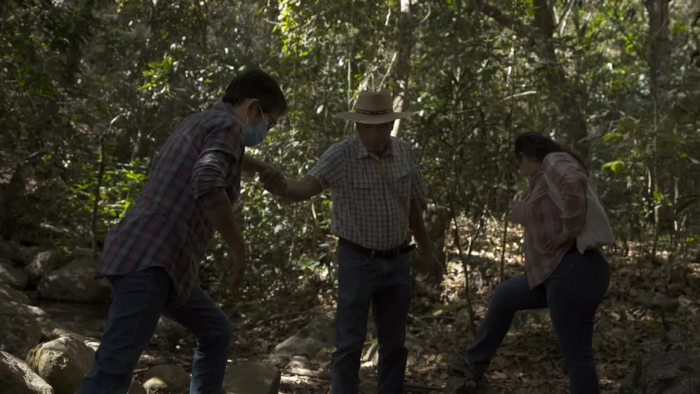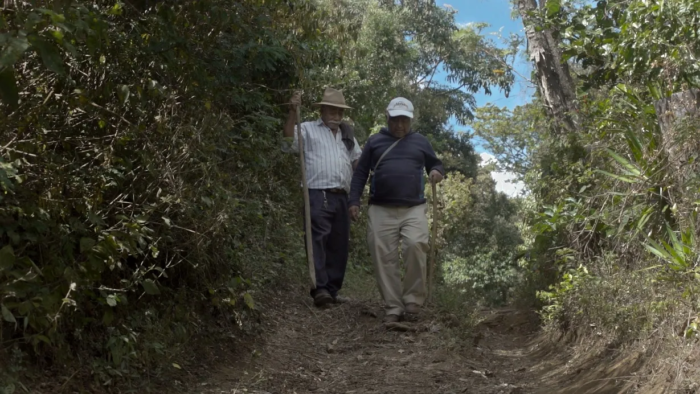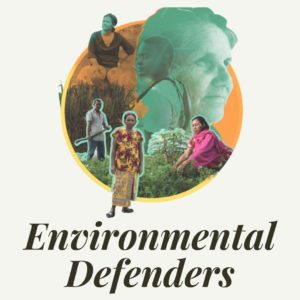Threats against ancestral land sparked a resurgence of pride in Xinka identity in eastern Guatemala. Xinka leaders in Jumaytepeque and Quesada exemplify permanent resistance and empowerment through their use of legal strategies and tools to preserve their culture.
This article was originally published in Spanish by our partners at No Ficción and has been republished in English as part of our partnership for the Environmental Defenders series, curated and edited by Katie Jones and inspired by the Global Witness report highlighting the terrible toll of killings of those who seek to defend their rights to land, water, and their own way of life. Each new post is released initially to LAB ‘patrons’ (paying subscribers), but will later be made available in full to all visitors to LAB’s website.
Two decades ago, the 2002 Census reported that there were just 16 thousand people who self-identified as Xinka in Guatemala. 16 years later, in the most recent government count, that number shot up by 1,600 per cent to 270,000 people. There had obviously been a rebirth of identity, but not by happenstance.
‘There was a perception that there were no more Xinkas, but we worked very hard on strengthening our cultural identity,’ says Angélica Jiménez, president of the commission on women in the Xinka Parliament and a communal landholder in the village of Queada, Jutiapa. ‘There was an enormous need to recover our roots in order to defend our forests and rivers from megaprojects looking to enter our territory.’
Xinka land extends across parts of the eastern Guatemalan departments Jutiapa, Santa Rosa, Jalapa, and Escuintla. Academic Claudia Dary explains in her work on the history of the Xinka people that under the Spanish crown their territory was known as the Corregidor of Guazacapan and stretched between the rivers Michatoya and La Paz, just along the Salvadoran border.
‘Before the Spanish invasion, our ancestors maintained control over the territory from atop of the highest hills. To us they are sacred,’ says Kelvin Jiménez, attorney for the Xinka Parliament, as he looks out at a panoramic view of the communal land from the volcano Jumaytepeque, a sacred site for the Xinka located in Santa Rosa. In their native language the Xinka call it Ixiwa’ Wona’, or ‘Hill of Life.’
Jiménez points out the territorial boundaries of the Xinka’s 172 communal ranches. The local Indigenous authority has the final say on all decisions concerning the land. They fought for 11 years in Guatemalan courts for the state to acknowledge their right to the land. Indigenous groups have historically been invisibilized by the state, making it impossible to apply international norms on their behalf and severely hampering efforts to defend their rights.

U.N. Special Rapporteur for Indigenous Peoples, James Anaya, underscores the need to strengthen the representative organizations of Indigenous peoples in order for them to meaningfully participate in decision-making about events affecting them.
In 2018, the legal representative for Jumaytepeque, Fidel Ortiz, consulted with the Property Registry about the limits of their territory. The Xinkas also requested that the registry carry out a biometric immobilization of the land, a legal process by which a property owner submits fingerprints in order to seal off their property from illegal contracts created by third parties.
In the process, they discovered that their ancestors had recovered the territory from the Spanish crown and enrolled it on behalf of the communal landowners of San Francisco Jumaytepeque. In 1961, the state had recognized them as owners of the land, but had registered them as an agrarian community – a legal construct that converts Indigenous peoples into civil associations in order to grant them a land deed. The legal classification is considered damaging and contradictory to the communal nature of these communities.
‘This is communal land. My parents taught me that the land of Jumaytepeque can only be handed down from one generation to the next or sold between community members,’ says Ortiz. ‘Our ancestors purchased the land from the Spanish crown after it had been seized. The land has cost blood, which is why we must maintain and care for it according to our own vision.’

The Xinka authority in Jumaytepeque now holds the community’s property deeds. In 2019, the Property Registry immobilized the land on their behalf, recognizing them as property owners. Before reaching that historic moment, the Xinka were dispossessed of their land, twice: first by the Spanish crown, and again in 1916. In the second instance, President Manuel Estrada Cabrera registered the land to the civil municipality, as opposed to the Xinka authority. During the four-decade internal armed conflict ending in 1996, land recovery efforts were paralyzed amid collective silence and repression.
Protecting the water and forests
50 miles from Jumaytepeque is Quesada, a municipality in the easternmost department of Jutiapa where 44 per cent of the 22,000 residents identify as Xinka. In each village in the municipality there are signs reading: ‘No to mining.’
The town is home to 17 miles of communal forest known as Las Flores Hill. The territory, administered by the ancestral authority, was recovered in 1892 through a purchase by the writer José Milla Vidaurre.
Angélica Jiménez, 60, recalls moments from her childhood as she passes from one rock to another in the streams running through the heart of the Xinka forest. She and Aleisar Arana, president of the Xinka Parliament, are key protectors of the people’s cultural identity and water.
‘Our resistance against the company Alternativa de Energía Renovable S.A. (Renewable Energy Alternative) was what strengthened us as a Xinka people,’ says Arana. ‘We empowered ourselves with legal knowledge to defend the territory in every possible way. We, both men and women, put our bodies on the line in peaceful resistance.’
After the company arrived in February 2016 to install a charcoal energy plant, the population reported that excessive deforestation had adversely affected groundwater recharge areas supplying water to Quesada.
That same year, the municipality carried out a consultation with the Xinka authority that determined that 99.3 per cent of residents opposed the issuance of operating licenses to the company. ‘It was then that we reached a very important conclusion that our resistance in the streets since July of 2016 was not enough. While we resisted here, we needed to pursue all legal avenues,’ underscores Jiménez.
The peaceful resistance lasted until the company left in 2019. During those three years, at least six community members were criminalized. Doctor and surgeon Joel Arrivillaga was accused by the company of usurping the land and spent three years fighting his case. ‘It wasn’t easy. At least the Xinka Parliament supported me by providing legal counsel,’ he says. ‘It was worth it because it established a precedent in favour of the community.’
The next year, Guatemala’s Constitutional Court ruled that the company had altered the paths of river tributaries and operated without an environmental impact study. Local communities had argued that the company’s actions overlooked the existence of the Xinka people, and the magistrates underscored the need to seek the participation of all affected people during community consultations.
The court also ordered the company to carry out a reforestation plan on the property where they had operated, using native tree species and under the joint supervision of the National Forest Institute and the National Council on Protected Areas. These measures have yet to be implemented.

A rebirth for the Xinka
These successes in Jumaytepeque and Quesada have helped the Xinka keep alive their notion of cultural identity in order to defend their rights. In an ongoing consultation with the mining company El Escobal, the Indigenous authorities — the rightful owners of the land— are representing the community’s collective interests before the Ministry of Energy and Mining.
When the legislative bloc Convergence proposed a bill to establish a ‘Day of the Xinka People’ in 2019, the Xinka Parliament intervened before Congress to prevent folkloric misperceptions of their community from entering into the bill and to ensure that the objective of the legislation would be to ensure state action to preserve, revitalize, and promote Xinka culture and language.
In the bill the Xinka are also seeking recognition of long-held communal land and for May 5, acknowledged by their ancestors as the start of the fertile rainy season, to be recognized as a national holiday to commemorate the Xinka people.

This article was originally published in Spanish by our partners at No Ficción and has been republished in English as part of our partnership for the Environmental Defenders series, curated and edited by Katie Jones and inspired by the Global Witness report highlighting the terrible toll of killings of those who seek to defend their rights to land, water, and their own way of life. Each new post is released initially to LAB ‘patrons’ (paying subscribers), but will later be made available in full to all visitors to LAB’s website.

